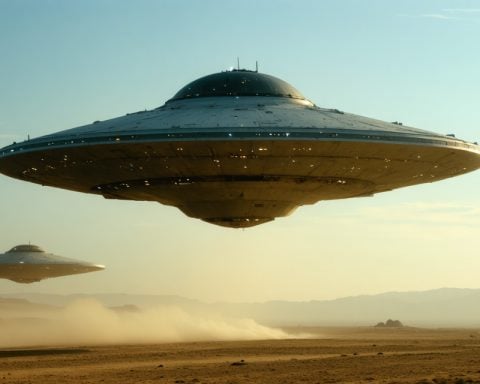Unforeseen Challenges after Recent Test Flight
The Federal Aviation Administration (FAA) has paused all future launches of SpaceX’s Starship following a recent test flight that scattered debris across the Atlantic Ocean. On a Thursday test flight, while the booster rocket made a successful return, the Starship vehicle disintegrated during its ascent, leading to a dangerous shower of debris.
The fallout was serious enough to warrant emergency measures from the FAA. They designated a debris response area and communicated potential risks to aircraft in the vicinity, particularly over the Bahamas. According to reports, some airplanes had to hold or divert their routes due to the scene unfolding beneath them.
While no injuries have been reported, there are claims that debris may have impacted the Turks and Caicos Islands, with some damage to local property noted. The FAA is collaborating with SpaceX to investigate these incidents thoroughly.
Moreover, the FAA has mandated a mishap investigation which puts future Starship test flights on hold until safety can be ensured. Elon Musk hinted at an oxygen and fuel leak as a preliminary cause of the Starship’s breakup, and he remained hopeful about resuming test flights in the coming weeks, pending the FAA’s review. This situation underscores the challenges ahead for SpaceX as it endeavors to advance its Starlink satellite program alongside Starship’s development.
The Broader Implications of SpaceX’s Starship Test Flight Challenges
The recent pause in SpaceX’s Starship launches due to the debris fallout from a test flight has reverberations that extend far beyond the confines of the aerospace industry. As private space exploration continues to gain momentum, the implications for global economy and societal attitudes toward space travel are profound.
First, the halt in Starship operations could affect the burgeoning commercial space sector, potentially stalling advancements in satellite deployment and services such as SpaceX’s Starlink, which is already vital for global internet connectivity. A drawn-out investigation process may deter future investments in the sector as stakeholders grow cautious of regulatory landscapes. The success of SpaceX in launching and maintaining efficient operations is critical not only for its profitability but also for the expansion of international space markets.
Moreover, environmental concerns are surfacing as debris from these tests poses a risk not only to aircraft but also to the oceanic ecosystem. Environmentalists worry about the long-term impact of rocket debris on marine life, particularly in sensitive regions like the Caribbean. This incident may spur calls for stricter environmental regulations governing space launches and their aftermath.
Furthermore, as public fascination with space grows, so does scrutiny over safety protocols and corporate responsibility in the industry. This moment could mark a pivotal shift in cultural attitudes, where increased accountability becomes a demand from both the public and governing bodies. As society skews toward technological optimism, incidents like these cast shadows that could hinder public trust and investment in future missions.
Ultimately, the ongoing situation illustrates the delicate balance between innovation and responsibility, a lesson that may shape the trajectory of space exploration for years to come.
SpaceX Struggles with Starship Setbacks: What Lies Ahead?
Unpacking the Recent FAA Suspension of Starship Launches
The recent hiatus of SpaceX’s Starship program due to the Federal Aviation Administration (FAA) ceases to be just an operational setback; instead, it raises significant questions regarding the safety protocols and future implications for space exploration.
Key Features of the Incident
During the latest test flight, the Starship vehicle faced catastrophic disintegration. Notably, the Super Heavy booster successfully returned, but the Starship’s demise resulted in a hazardous debris spread across the Atlantic Ocean. This debacle led the FAA to enforce emergency safety measures, establishing a debris response area and alerting aircraft operating near the Bahamas.
Safety Concerns and Regulations
The FAA is taking this incident seriously. The mishap investigation initiated by the FAA is a critical step to ensure that safety standards are met before future launches can take place. This scrutiny aims to identify root causes, with Elon Musk suggesting a potential oxygen and fuel leak as a contributing factor.
Pros and Cons of SpaceX’s Approach
Pros:
– Innovation Leader: SpaceX has consistently pushed the envelope in aerospace engineering and rocket design.
– Rapid Testing Cycle: Their aggressive testing schedules aim to minimize time between designs and real-world applications.
Cons:
– Safety Risks: The recent incidents highlight possible oversights in safety measures.
– Regulatory Scrutiny: The increased FAA oversight could slow down future launches significantly, affecting timelines for missions.
Comparison with Other Space Programs
When compared to other aerospace entities such as Blue Origin or NASA, SpaceX’s timeline for Starship development has been notably ambitious. NASA’s more conservative approach includes extensive pre-launch simulations and tests to mitigate risk, while SpaceX executes rapid iteration that can lead to unforeseen failures, as seen in the recent test flight.
Future Considerations for SpaceX
With its Starlink satellite program in conjunction with Starship’s development, SpaceX must navigate these challenges strategically. The lessons learned from this setback could shape future launches, leading to more robust safety protocols and stringent testing methods.
Pricing and Market Analysis
The costs associated with launching Starship are substantial, estimated in the range of several million dollars per launch. The potential financial impact of this pause in flight operations underscores the need for efficient risk management strategies.
Security and Sustainability Aspects
The environmental implications of rocket launches are gaining attention. As SpaceX aims for sustainability with its Starship program, future designs may need to incorporate more eco-friendly technologies and sustainable materials to minimize debris and pollution during operations.
Expert Predictions
Industry experts predict that if SpaceX can resolve the safety issues promptly, future test flights may resume within a few weeks. However, ensuring compliance with FAA regulations will be crucial for ongoing missions, especially considering the heightened public and governmental scrutiny regarding space debris and safety protocols.
In conclusion, while the recent FAA suspension presents a difficult challenge for SpaceX’s ambitions, it also offers an opportunity for reflection and improvement. The developments in this situation will be keenly observed by stakeholders across the aerospace sector and those invested in the future of commercial space travel.
For more insights on space exploration, visit SpaceX.



















